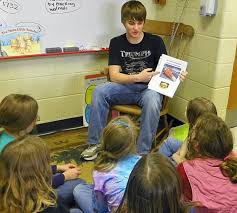In professional education, learning by teaching designates a technique which centers on student voice, letting pupils and students to prepare and teach lessons or parts of lessons. Learning by teaching should not be confused with presentations or lectures by students, as students do not only convey a certain content, but choose their own methodological and didactical approach in teaching their classmates a specific area of the respective subject. It should neither be confused with Tutoring or peer-teaching, because of the intensive control and supporting of the learning-process through the teacher by learning by teaching in contrast to the other methods.
Learning by Teaching by Martin (LdL)
Anthropological Basis of LdL
This is related to the pyramid or hierarchy of needs introduced by Abraham Maslow, which consists, from base to peak, of
1) physiological needs,
2) safety/security,
3) social/love/belonging,
4) esteem/self-confidence and
5) being/growth through self-actualization and self-transcendence.
Personal growth moves upward through hierarchy, whereas regressive forces tend to push downward. The act of effective learning, preparation and teaching of others contributes to items 3 through 5 above. Facing the issues of our world today and in the future, it is essential to mobilize as many intellectual resources as possible, which happens in LdL lessons in a special way. Democratic skills are upheld through the communication and socialization needed for this shared discovery and construction of knowledge.
Subject-related Component (in foreign language teaching) of LdL
This aims to refute the alleged contradiction between the three main components: automatization of speech-related behavior, teaching of cognitively internalized contents and authentic interaction/communication.
The LdL Approach
After intensive preparation by the teacher, students become accountable for their own learning and teaching. The new material is divided into small units and student groups of not more than three people are formed. Each group familiarizes itself with a strictly defined area of new material and gets the assignment to teach the whole group in this area. One important aspect is that LdL should not be confused with a student-as-teacher-centered method. The material should be worked on didactically and methodologically (impulses, social forms, summarizing phases etc.). The teaching students have to ensure their audience has understood their message/topic/grammar points and therefore use different means to do so (e.g. short phases of group or partner exercises, comprehension questions, quizzes etc.)
Most teachers using the method do not implement it in all their classes or all the time. They state the following advantages and disadvantages:
Advantages:
- Student work is more motivated, effective, active and intensive due to lowered inhibitions and an increased sense of purpose
- By removing the class’ division of authoritative teacher and passive audience, an emotive solidarity is obtained.
- Students may perform many routine tasks, otherwise unnecessarily carried out by the instructor
- Next to subject-related knowledge students obtain important key qualifications like
– teamwork
– planning abilities
– reliability
– presentation and moderation skills
– self-confidence
Disadvantages
- The introduction of the method needs a lot of time.
- Students and teachers have to work more than usual.
- There is a risk of simple duplication, repetition or monotony if the teacher does not provide periodic didactic impetus.
The Martin-Reception
Martin’s Work has been largely accepted in teacher training and by practicing teachers: since 1985 more than 100 teacher students in all subjects wrote their ending thesis about LdL. Also the education administration received both the theory and the practice of LdL. On the contrary, even if LdL was cited in didactics handbooks (in the handbook for didactics French teaching as foreign language, 2006, LdL was described as “extreme form of learner centered teaching“), a deep reflection about the Martin method didn’t take place in sciences like pedagogic’s and didactics.
